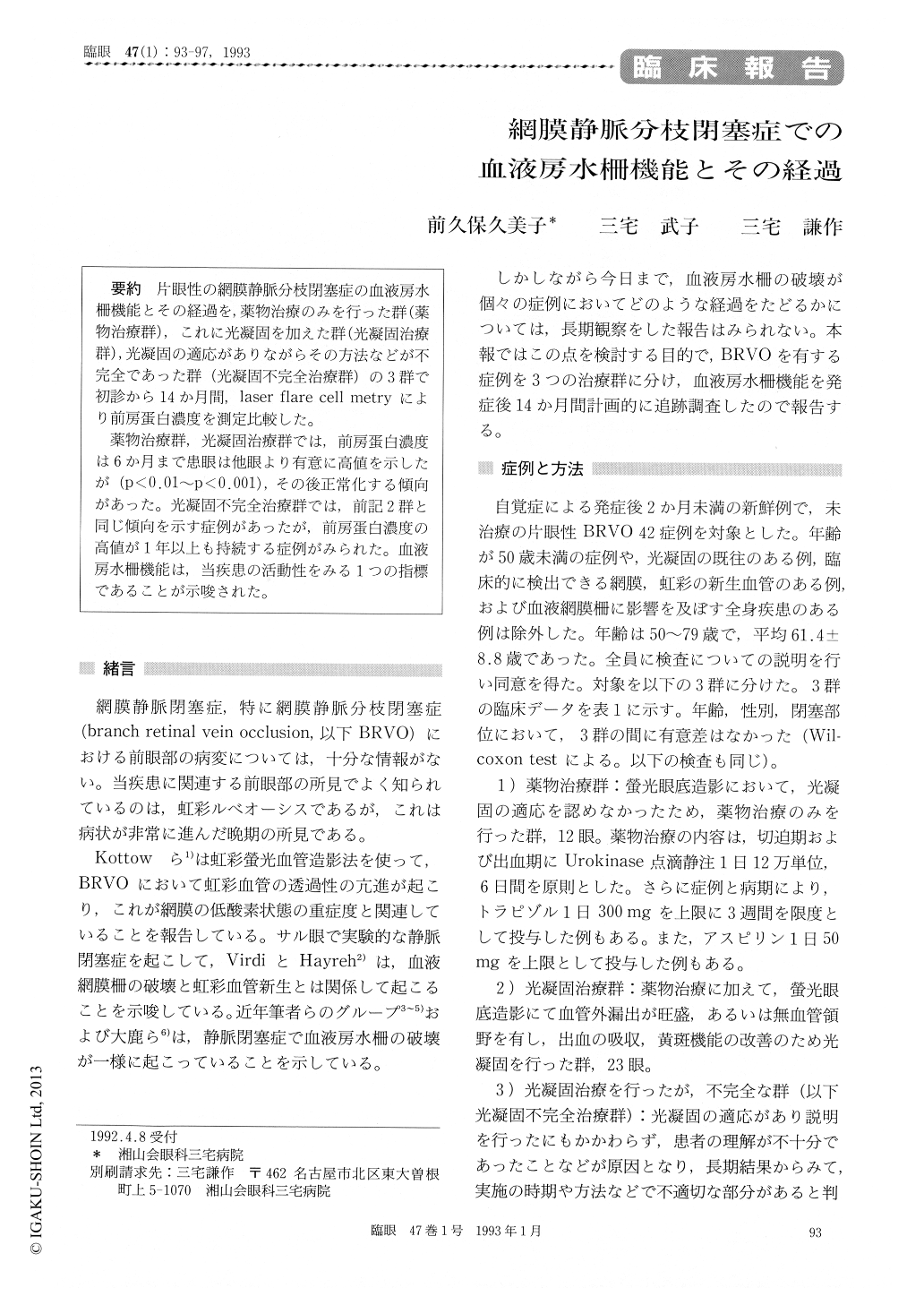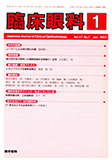Japanese
English
- 有料閲覧
- Abstract 文献概要
- 1ページ目 Look Inside
片眼性の網膜静脈分枝閉塞症の血液房水柵機能とその経過を,薬物治療のみを行った群(薬物治療群),これに光凝固を加えた群(光凝固治療群),光凝固の適応がありながらその方法などが不完全であった群(光凝固不完全治療群)の3群で初診から14か月間,laser flare cell metryにより前房蛋白濃度を測定比較した。
薬物治療群,光凝固治療群では,前房蛋白濃度は6か月まで患眼は他眼より有意に高値を示したが(p<0.01〜p<0.001),その後正常化する傾向があった。光凝固不完全治療群では,前記2群と同じ傾向を示す症例があったが,前房蛋白濃度の高値が1年以上も持続する症例がみられた。血液房水柵機能は,当疾患の活動性をみる1つの指標であることが示唆された。
We quantitated the aqueous protein concentra-tion in 42 eyes with branch retinal vein occlusion using a flare-cell meter. We excluded cases who were less than 50 years of age and cases of BRVO which had been present more than 2 months when first seen by us. The 42 cases were treated either by systemic urokinase 12 eyes, by photocoagulation 23 eyes and without medication and adequate photo-coagulation 10 eyes. During the initial 6-month period, the affected eyes showed significantly higher aqueous protein in the groups treated by medication and photocoagulation (p<0.01, p<0.001). The group treated without adequate photo-coagulation showed a similar trend, some cases showing elevated protein value in the affected eye for up to 14 months. Vitreous fluorophotometry in selected cases indicated that the elevation of aque-ous protein is related to disruption of blood-retinal barrier. The findings suggest that aqueous protein value would serve as a parameter for activity of branch retinal vein occlusion.

Copyright © 1993, Igaku-Shoin Ltd. All rights reserved.


